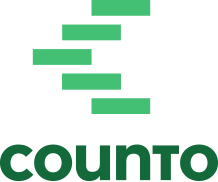Demystifying Financial Statements: What Your Balance Sheet is Telling You
As a small business owner in Singapore, understanding your financial statements is crucial for making informed decisions. Let’s demystify the balance sheet and explore what it’s really telling you about your business.
What is a Balance Sheet?
A balance sheet is a snapshot of your company’s financial position at a specific point in time. It shows what your business owns (assets), what it owes (liabilities), and the difference between the two (equity).
At its core, every balance sheet is built on this fundamental equation:
Assets = Liabilities + Equity
Let’s break down the components
1. Assets are resources owned by your company that have economic value.
Current Assets:
- Cash and cash equivalents
- Accounts receivable
- Inventory
- Prepaid expenses
Non-Current Assets:
- Property, plant, and equipment
- Intangible assets (e.g., patents, trademarks)
- Long-term investments
Example: Let’s say your Singapore-based F&B business has $50,000 in cash, $30,000 in inventory, and $20,000 in kitchen equipment. Your total assets would be $100,000.
2. Liabilities are your company’s financial obligations or debts.
Current Liabilities:
- Accounts payable
- Short-term loans
- Accrued expenses
- Taxes payable
Non-Current Liabilities:
- Long-term loans
- Deferred tax liabilities
Example: If your business has $15,000 in accounts payable to suppliers and a $25,000 bank loan, your total liabilities would be $40,000.
3. Equity represents the owner’s stake in the business.
Example: Given the assets of $100,000 and liabilities of $40,000 in our previous examples, the equity in your business would be $60,000.
✅ Tired of surprise fees from accounting services? We prioritise your savings and efficiency. From multicurrency accounting to tax filing, Counto handles it all—with unlimited transactions. Explore our transparent, all-in-one pricing here.
Key Ratios to Consider
1. Current Ratio = Current Assets / Current Liabilities
Example: If your current assets are $80,000 and current liabilities are $40,000, your current ratio is 2:1, indicating good short-term liquidity.
2. Debt-to-Equity Ratio = Total Liabilities / Total Equity
Example: Using our previous figures, the debt-to-equity ratio would be 40,000 / 60,000 = 0.67. This suggests a relatively low reliance on debt financing.
3. Return on Equity (ROE) = Net Income / Shareholders’ Equity
Example: If your annual net income is $30,000 and equity is $60,000, your ROE is 50%, indicating efficient use of equity to generate profits.
Interpreting Your Balance Sheet: Some Examples
1. Asset Composition: In Singapore’s competitive retail landscape, a fashion boutique maintaining $50,000 in inventory might indicate overstocking if sales are slow, potentially tying up cash that could be used elsewhere.
2. Liabilities Management: A tech startup in Singapore with $100,000 in assets and $80,000 in liabilities might consider restructuring its debt or seeking equity investment to improve its financial stability.
3. Equity Growth: A local café that started with $50,000 in owner’s equity and now shows $150,000 after two years demonstrates strong growth, making it attractive for potential expansion or partnership opportunities.
Red Flags to Watch For in a Balance Sheet
1. Decreasing cash reserves without corresponding asset growth Example: Your cash dropping from $50,000 to $20,000 over a quarter without an increase in other assets could signal cash flow issues.
2. Rapidly increasing short-term debt Example: Short-term loans increasing from $10,000 to $50,000 in six months might indicate over-reliance on debt for daily operations.
3. Negative equity (liabilities exceeding assets) Example: Total assets of $100,000 with liabilities of $120,000 result in negative equity, a serious concern requiring immediate attention.
Using Your Balance Sheet for Decision Making
1. Expansion Decisions: A strong balance sheet showing $200,000 in assets with only $50,000 in liabilities could support your case for a business expansion loan.
2. Cash Flow Management: If your balance sheet shows $30,000 in accounts receivable but $40,000 in upcoming payments, you might need to focus on collecting outstanding invoices or seek short-term financing.
3. Benchmarking: If the average current ratio in your industry is 2.5, but yours is 1.5, it might indicate a need to improve your short-term liquidity position.
Summary
Your balance sheet is a powerful tool that tells the story of your business’s financial health. By understanding what it’s telling you, you can make informed decisions to drive your Singapore-based small business towards greater success. Remember, while this guide provides a foundation, each business is unique.
For personalised advice on interpreting your balance sheet and optimising your financial strategy, consider consulting with a qualified accountant or financial advisor familiar with Singapore’s business landscape.
Experience the Counto advantage
Counto is the trusted provider of accounting, tax preparation and CFO services for startups and SMEs. Get accounting plans that combine bookkeeping with corporate tax filing to help you stay compliant at an affordable price. To learn more, speak to us directly on our chatbot, email us at [email protected], or contact us using this form.
Here are some articles you might find helpful:







